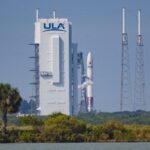It’s taken half a century, but we’re finally getting a handle on our Sun’s complex magnetic field. A new model from NASA captures the strange surface interactions that create dramatic swirls of plasma and coronal mass ejections .If we can better understand the Sun’s magnetic field, we might one day be able to predict when it will have an eruption triggering a solar storm.
It took until the 1950s for us to really see the Sun, peering beyond the visible spectrum to catch a glimpse of the twisting loops of the superheated corona. After decades of observations and modeling, we pieced together that the plasma flows in response to a changing magnetic field. That field drives solar explosions and storms that are potentially devastating here on Earth, and saturates our Solar System with troublesome radiation. And yet, we’re still puzzled by it.
The Sun is a giant magnetic star, but we don’t know why or what generates that field. Is the magnetic field generated at the surface, deep inside the Sun, or a mix of both?
Watching plasma at the Sun’s surface offers tantalizing hints at the magnetic dynamics of the star. Hot plasma naturally disintegrates into charged particles. Because electricity and magnetism are flip sides of the same coin, movement of the charged particles is both guided by and generates magnetic fields. That puts the Sun’s plasma at the center of a solar dynamo: heat churns the Sun’s interior plasma to generate magnetic fields.
But we can’t see the movement of that interior plasma. We can only observe the loops, towers, and flares at the surface as the corona glows brightly in ultraviolet radiation. This allowed NASA researchers to use what we can see as hard observations as a guide for their models, developing the Potential Field Source Surface model. The model successfully replicates coronal dynamics, even for the Sun’s far side.
Producing a good model of surface dynamics for the Sun’s magnetic field isn’t just about creating a bit of beautiful imagery. It’s also the first step in understanding how that structure extends at depth, and how the magnetic field is generated.
[NASA]
Top image: Potential Field Source Surface model of the Sun’s magnetic field. Credit: NASA/Duberstein/Mika McKinnon
Contact the author at [email protected] or follow her at @MikaMcKinnon.














